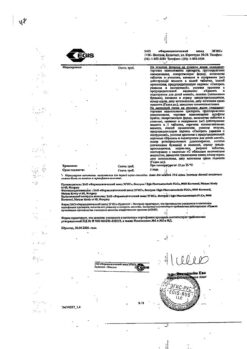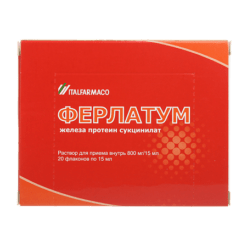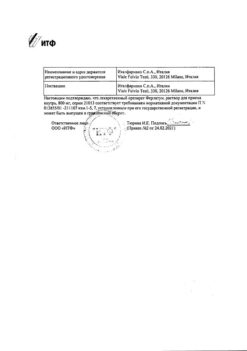No products in the cart.
Sodium heparin 5000 IU/ml 5 ml, 5 pcs
€1.00
Out of stock
(E-mail when Stock is available)
Description
Direct-acting anticoagulant belongs to the group of medium molecular weight heparins. In blood plasma it activates antithrombin III, accelerating its anticoagulant effect. It disrupts the transition of prothrombin into thrombin, inhibits the activity of thrombin and activated factor X, and to some extent reduces platelet aggregation.
For unfractionated standard heparin, the ratio of antiaggregant activity (antifactor Xa) to anticoagulant activity (ACTV) is 1:1.
increases renal blood flow; increases cerebral vascular resistance, decreases cerebral hyaluronidase activity, activates lipoprotein lipase and has hypolipidemic effects. Reduces surfactant activity in the lungs, suppresses excessive aldosterone synthesis in the adrenal cortex, binds adrenaline, modulates ovarian response to hormonal stimuli, increases parathormone activity. As a result of interaction with enzymes it can increase the activity of brain tyrosine hydroxylase, pepsinogen, DNA polymerase and decrease the activity of myosin ATPase, pyruvate kinase, RNA polymerase, pepsin.
Heparin has been reported to have immunosuppressive activity.
In patients with CHD (in combination with ASA) it reduces the risk of acute coronary artery thrombosis, myocardial infarction and sudden death. Reduces the frequency of recurrent heart attacks and mortality of patients who have had a myocardial infarction. In high doses it is effective for thromboembolism of the pulmonary artery and venous thrombosis; in low doses – for the prevention of venous thromboembolism, including after surgical operations.
In intravenous administration the blood clotting is slowed down almost immediately, in intravenous – after 15-30 min, in p/c – after 20-60 min, after inhalation the maximum effect – after 24 hours; duration of anticoagulant effect – respectively 4-5, 6, 8 hours and 1-2 weeks, therapeutic effect – thrombus formation prevention – lasts significantly longer. Deficiency of antithrombin III in plasma or at the site of thrombosis can reduce the antithrombotic effect of heparin.
When applied externally, it has a local antithrombotic, antiexsudative, moderate anti-inflammatory effect. It blocks the formation of thrombin, inhibits the activity of hyaluronidase, activates the fibrinolytic properties of blood. Heparin penetrating through the skin reduces inflammation and has an antithrombotic effect, improves microcirculation and activates tissue exchange, thus accelerating the process of resorption of hematomas and thromboses and reducing tissue swelling.
Indications
Indications
Prevention and therapy: deep vein thrombosis, pulmonary embolism (including peripheral vein disease), coronary artery thrombosis, thrombophlebitis, unstable angina pectoris, acute myocardial infarction, atrial fibrillation (including with embolism). accompanied with embolism), DIC, prevention and therapy of microthrombosis and microcirculatory disorders, renal venous thrombosis, hemolytic-uremic syndrome, mitral heart disease (prevention of thrombosis), bacterial endocarditis, glomerulonephritis, lupus nephritis.
The prevention of blood clotting during operations using extracorporeal circulation methods, during hemodialysis, hemosorption, peritoneal dialysis, cytapheresis, forced diuresis, when washing venous catheters.
Preparing non-bleeding blood samples for laboratory purposes and blood transfusions.
Active ingredient
Active ingredient
Composition
Composition
How to take, the dosage
How to take, the dosage
Interaction
Interaction
The anticoagulant effect of heparin is enhanced with concomitant use of anticoagulants, antiaggregants and NSAIDs.
The ergot alkaloids, thyroxine, tetracycline, antihistamines, and nicotine reduce the effect of heparin.
Special Instructions
Special Instructions
With caution use in patients with polyvalent allergies (including bronchial asthma), with arterial hypertension, dental manipulations, diabetes, endocarditis, pericarditis, intrauterine contraceptives, active tuberculosis, radiation therapy, liver failure, chronic renal failure, elderly patients (over 60 years, especially women).
Injection of heparin in m/m is not recommended because of the possibility of hematoma development, as well as the injection of other drugs in m/m during heparin treatment.
With caution, use externally in bleeding and conditions of increased bleeding, thrombocytopenia.
During treatment with heparin, it is necessary to monitor blood clotting parameters.
For heparin dilution, only physiological solution is used.
In case of development of severe thrombocytopenia (decrease in platelet count to half of the original number or below 100,000/μl), heparin should be stopped immediately.
The risk of bleeding can be minimized with careful assessment of contraindications, regular laboratory monitoring of blood clotting, and adequate dosing.
Contraindications
Contraindications
Bleeding, diseases accompanied by blood clotting disorders, suspected intracranial hemorrhage, cerebral vessel aneurysm, hemorrhagic stroke, dissecting aortic aneurysm, antiphospholipid syndrome, malignant arterial hypertension, subacute bacterial endocarditis, erosive and ulcerative lesions of the GI tract, Severe lesions of the liver parenchyma, cirrhosis with esophageal varices, malignant tumors in the liver, shock, recent surgery on the eye, brain, prostate, liver and biliary tract, conditions after spinal tap, menstruation, threatened miscarriage, childbirth (including recent ones).recent), hypersensitivity to heparin.
Do not apply to open wounds, mucous membranes, do not use with ulcerative and necrotic processes.
Side effects
Side effects
Blood coagulation system disorders: bleeding of the gastrointestinal tract and urinary tract, bleeding at the injection site, in areas under pressure, from surgical wounds, as well as bleeding in other organs, hematuria, thrombocytopenia are possible.
Digestive system disorders: nausea, decreased appetite, vomiting, diarrhea, increased liver transaminase activity.
Allergic reactions: skin hyperemia, drug fever, urticaria, rhinitis, skin itching and feeling of heat in the soles, bronchospasm, collapse, anaphylactic shock.
With the clotting system: thrombocytopenia (may be severe up to fatal) with subsequent development of skin necrosis, arterial thrombosis accompanied by gangrene, myocardial infarction, stroke.
Muscular system disorders: with long-term use – osteoporosis, spontaneous fractures, calcification of soft tissues.
Local reactions: irritation, pain, hyperemia, hematoma and ulceration at the injection site.
Others: transient alopecia, hypoaldosteronism.
Similarities
Similarities
Additional information
| Manufacturer | Ellara, Russia |
|---|---|
| Medication form | solution for injection |
| Brand | Ellara |
Related products
Buy Sodium heparin 5000 IU/ml 5 ml, 5 pcs with delivery to USA, UK, Europe and over 120 other countries.
















